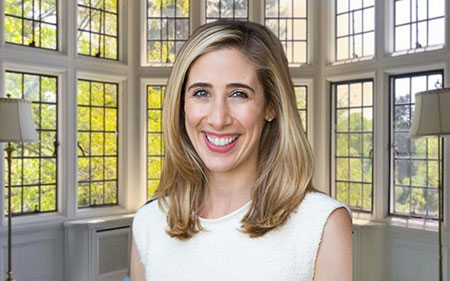As virtual graduation ceremonies conclude and schools look to a fall of near-certain online learning, some have asked me whether I envision schools existing permanently online. Even while I help schools improve their online pedagogy and realize the power of distance learning, I tell them no. Crises in American society have not typically changed the DNA of schooling (there was no great transformation after the 1918 influenza pandemic), and full-time online school is not right for many students—or for those of us who rely on school’s custodial role while we work. Yet I insist that there are key lessons from this shift to online learning we must embrace well after this crisis has passed. The outcome of this rapid toggle to online learning is not about remaking schools online but about finding the deeper lessons that will allow us to chart new territory in learning.
First, we should rethink the Industrial Revolution era’s devotion to “seat time,” a concept that mandates credit hours and equates time in a classroom with depth and rigor. Good online learning depends on reserving class time in a video conference for interaction and out-of-class time for assignments like reading, watching videos, or doing lab experiments. The crisis has demonstrated that teachers can provide deep learning experiences and cover key content outside of an 8am to 3pm schedule. Schools should reconsider the use of time when students return to the school building, prioritizing class for connection or going deeper with material—and pushing other learning into independent time.
Second, online learning forces students to use multiple modes to communicate and collaborate. In a video conference, students may engage in the chat thread, where they can brainstorm, with no classmate speaking over another. Students may record and share videos of themselves answering a question or collaborate on a shared document free from distraction and noise. More introverted students can readily engage. Teachers can get at a similar feel in the brick and mortar classroom by asking students to write their thoughts quietly before raising hands, making use of shared documents and online whiteboards, and rethinking traditional assessments. Already, teachers have told me that they will find a way to do a virtual brainstorm in their brick and mortar classes. After this crisis, having engaged their students in creative ways, teachers will do so in the traditional classroom.
Third, over the past few months, teachers have invited students to “meet the moment” by solving real problems. At one school in Portland, ME, a positive psychology class built a website to help the public cope with the mental health effects of the crisis. The instrumental group at a school in Boston, MA recorded songs to brighten spirits of nursing facility residents. Teachers can incorporate engaged learning beyond this moment—in many disciplines and for many types of problems. For example, in a curriculum colleagues and I designed, students learn app design by building a tool for Alzheimer’s patients. The problems in our society—from financial to environmental to political—will loom large for this generation. Students should tackle them authentically in the classroom.
Fourth, educators have now seen—sometimes literally via webcam—into their students’ home lives. Teachers may be more keenly aware than before of the backdrops that undoubtedly influence their students’ school days, whether mundane or profound. This crisis has brought forward the great diversity that can exist among students. Authentic assignments in this moment and beyond make meaning of those varied contexts.
Going forward, schools might leverage online learning to open up these backdrops and join students across geographic, cultural, or political divides—or even within the same community. Connect students in one school to the best teacher for them at another; encourage a student grappling solo with an identity question to connect with another across the state; or allow students to learn alongside those from another country.
Yet it is those backdrops that can wall students off from promising new educational directions. Beyond access to devices for learning, about 21 million Americans do not have broadband internet. Policy makers have started the valiant push for universal broadband, but we must recognize inequities in opportunity, not just access: parents who cannot help children at home because of language barriers, or students who lack adequate space for focused study. This moment has brought these gaps into focus, and all progress must bear them in mind.
[Read MSON’s Statement on Racial Injustice to learn more about MSON’s commitment to reflection, listening, and taking action in some of these areas.]
Finally, let’s keep up the surging spirit of gratitude to teachers. As we celebrate the healthcare workers who literally saved lives, we must acknowledge the class of professionals we are happy to praise—but from whom we withhold commensurate respect and compensation. Many of our teachers have shown themselves to be strikingly flexible and committed—I have seen it in the university professor grappling with serving students now flung across the globe to my own child’s preschool teachers brilliantly engaging toddlers via video conference. They moved to remote learning in the blink of an eye, often with their own children at home, calling forth enormous care and creativity. We will need their empathy and support even more in a world where students’ parents may be jobless, and other support networks may dissolve. Teachers are true heroes who will find the lessons forged in this crisis and be there for their students when they gather in person again.

